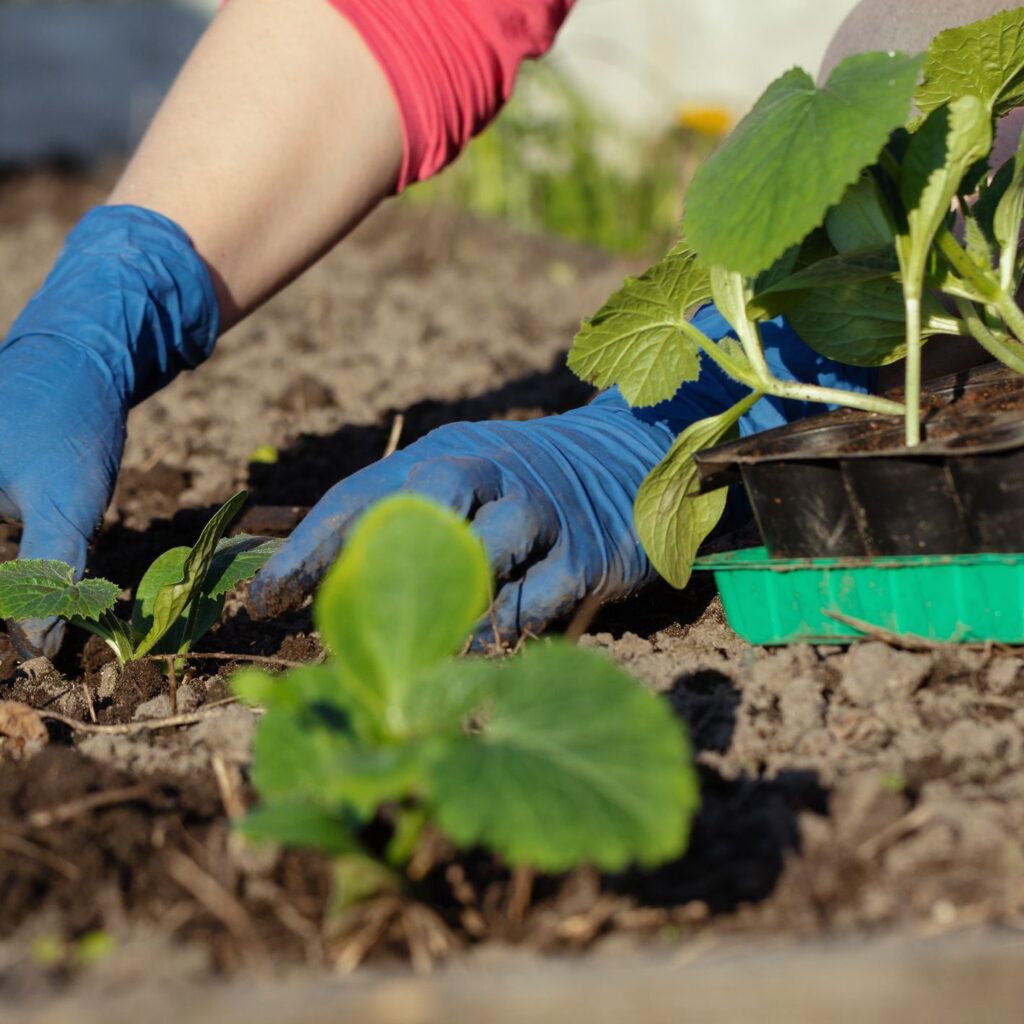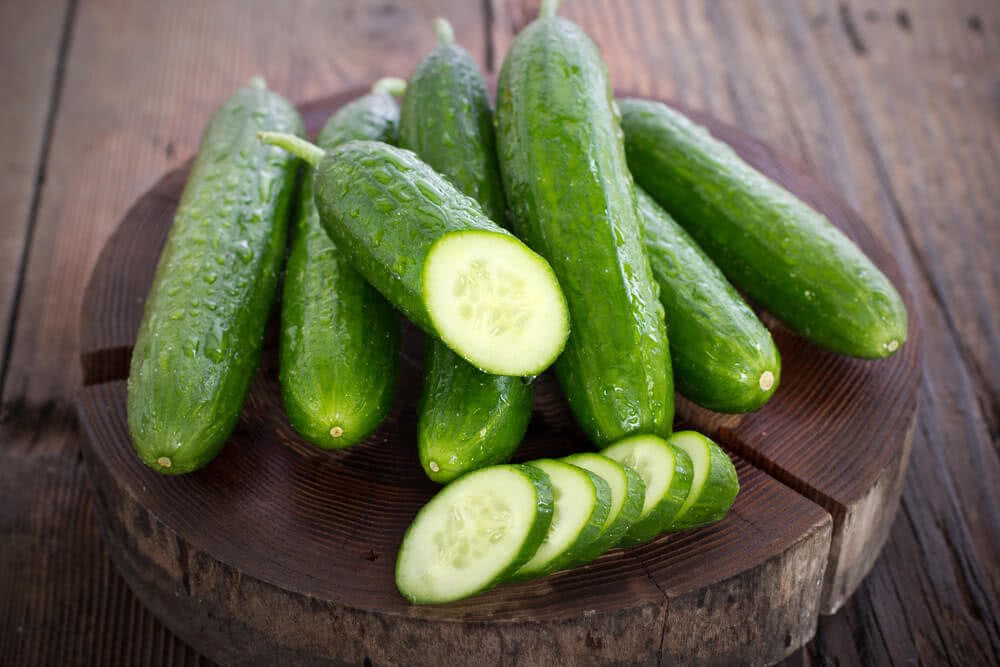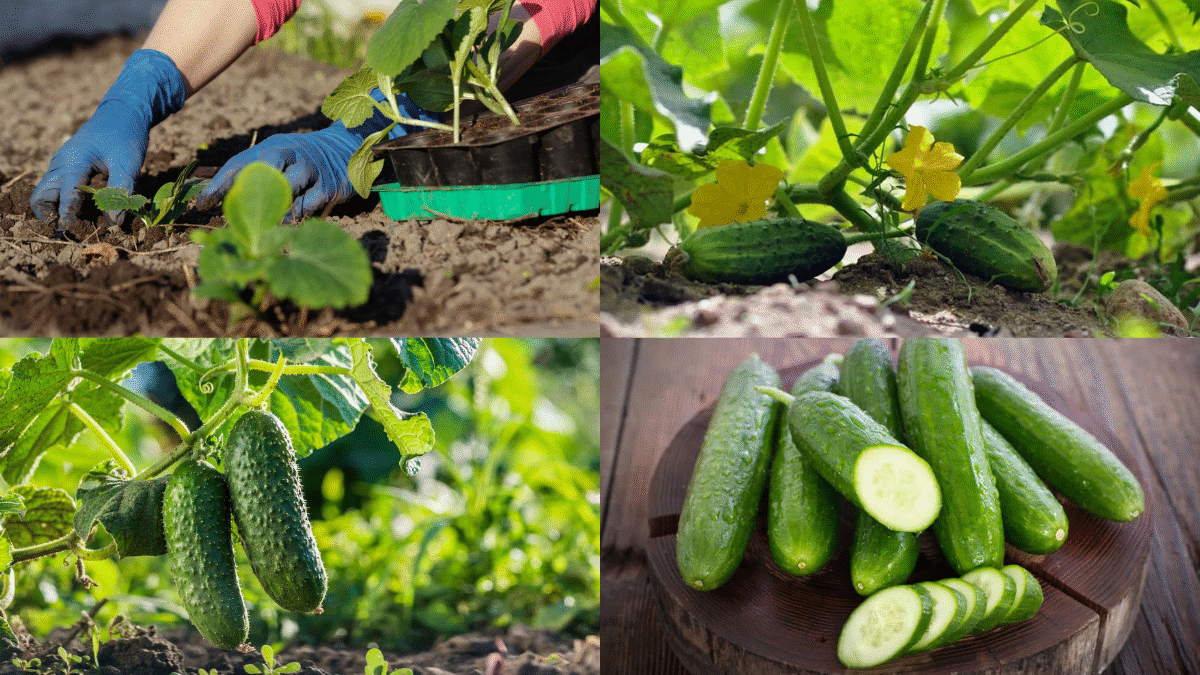When summer arrives, few things taste as crisp and refreshing as a homegrown cucumber. Whether sliced into salads, pickled for later, or enjoyed fresh from the vine, cucumbers are a warm-weather staple that’s surprisingly easy to grow in your garden or on a sunny patio.
If you’ve ever wanted to enjoy juicy, flavorful cucumbers straight from your backyard, this guide will show you exactly how. From choosing the right variety and planting at the perfect time, to providing the care they need for a bountiful harvest, let’s dive into everything you need to know about how to plant cucumbers for refreshing summer harvests.

Why Grow Cucumbers at Home?
Cucumbers aren’t just versatile in the kitchen — they’re one of the fastest-growing, heat-loving vegetables you can grow. With just a little effort, you’ll be rewarded with abundant harvests and the satisfaction of picking your own produce.
Benefits of Growing Cucumbers:
- Fast-growing and highly productive.
- Delicious fresh, pickled, or infused in water.
- Great for trellises, small gardens, and containers.
- Packed with hydration and nutrients like vitamin K and potassium.
Types of Cucumbers: Choose the Right Variety
Before you plant, decide which cucumber variety best fits your needs and space. Cucumbers are typically classified into two categories:
1. Slicing Cucumbers
- Best for fresh eating.
- Smooth or slightly bumpy skin.
- Longer fruits, usually 6–10 inches.
Popular Varieties:
Marketmore 76, Straight Eight, Diva.
2. Pickling Cucumbers
- Shorter, bumpier, and crunchier.
- Ideal for pickling.
Popular Varieties:
Boston Pickling, National Pickling, Bush Pickle.
There are also bush varieties (compact, perfect for containers) and vining varieties (which need trellises but produce heavily).
When to Plant Cucumbers
Cucumbers thrive in warm weather and are extremely frost-sensitive.
Ideal Planting Time:
- Wait until after the last frost date in your area.
- Soil temperature should be at least 70°F (21°C).
- For an earlier harvest, start seeds indoors 3–4 weeks before the last frost and transplant once it’s warm.

Choosing and Preparing the Planting Site
Cucumbers need the right conditions to thrive and produce abundant fruits.
Site Requirements:
- Full sun (at least 6–8 hours daily).
- Well-drained soil rich in organic matter.
- Slightly acidic to neutral soil pH of 6.0 to 7.0.
Soil Preparation:
- Loosen soil to a depth of 12 inches.
- Mix in compost or well-rotted manure.
- Add a balanced, all-purpose fertilizer if soil is poor.
How to Plant Cucumbers
You can plant cucumbers from seeds or transplants. They grow quickly, so direct seeding is often easiest.
Direct Seeding Outdoors
- Create mounds (hills) about 1–2 feet apart.
- Sow 3–4 seeds per mound, 1 inch deep.
- Water gently but thoroughly.
- Once seedlings sprout, thin to the 2 strongest plants per mound.
Transplanting Seedlings
- Transplant seedlings once they have 2–3 true leaves and outdoor temps are consistently warm.
- Space plants 12 inches apart for bush varieties or 18–36 inches apart for vining types.
- Handle gently to avoid disturbing roots.
Supporting Your Cucumbers: Trellising Tips
Cucumbers love to climb. Growing them vertically:
- Saves space.
- Improves airflow, reducing disease.
- Keeps fruits clean and straight.
Use:
- Sturdy garden trellises.
- Fencing or vertical frames.
- Tomato cages for bush varieties.
Gently train vines as they grow, tying them loosely with garden twine.

Watering Cucumbers the Right Way
Cucumbers are made up of over 95% water, so consistent watering is essential for healthy, non-bitter fruits.
Watering Tips:
- Keep soil consistently moist but not soggy.
- Water deeply once or twice a week, depending on weather.
- Water early in the day to allow foliage to dry and prevent mildew.
- Use mulch around plants to retain moisture and suppress weeds.
Fertilizing for Better Yields
Cucumbers are fairly heavy feeders, especially once fruits start to set.
Fertilizing Schedule:
- Before planting: Mix a balanced fertilizer (10-10-10) into the soil.
- Once flowering begins: Apply a liquid fertilizer high in potassium and phosphorus every 2–3 weeks.
- Avoid too much nitrogen, which produces lush leaves but fewer fruits.
Harvesting Cucumbers
Knowing when and how to pick cucumbers ensures crisp, flavorful harvests.
Harvesting Tips:
- Pick when fruits are firm and bright green.
- Size varies by variety:
- Slicing cucumbers: 6–10 inches.
- Pickling cucumbers: 2–4 inches.
- Don’t let them over-ripen; large, yellowing cucumbers turn bitter.
- Harvest regularly to encourage continuous production.
Use garden shears or gently twist cucumbers off the vine to avoid damaging the plant.
Common Cucumber Pests and Problems
Cucumbers can face some challenges, but quick action keeps them healthy.
Pests:
- Cucumber beetles: Yellow-and-black bugs that spread disease.
- Aphids: Tiny sap-sucking insects.
- Spider mites: Cause speckled, yellowed leaves.
Control Tips:
- Use insecticidal soap or neem oil.
- Handpick larger pests.
- Encourage beneficial insects like ladybugs.
Diseases:
- Powdery mildew: White, powdery leaf coating.
- Downy mildew: Yellow leaf spots.
- Bacterial wilt: Causes sudden plant collapse.
Prevention:
- Plant disease-resistant varieties.
- Ensure good airflow.
- Water at soil level, avoiding foliage.

Companion Planting with Cucumbers
Some plants grow better together, offering natural pest control and improved growth.
Good Companions:
- Radishes: Deter cucumber beetles.
- Marigolds: Repel aphids and other pests.
- Beans and peas: Enrich soil with nitrogen.
- Lettuce: Acts as a living mulch.
Avoid planting with:
- Potatoes: Compete for nutrients.
- Aromatic herbs like sage: Can inhibit growth.
Enjoying Your Cucumber Harvest
Cucumbers are wonderfully versatile in the kitchen:
- Salads and wraps.
- Pickles — make quick refrigerator pickles or classic dill pickles.
- Cucumber water or smoothies.
- Cold cucumber soup for hot summer days.
Refrigerate cucumbers in a breathable bag and enjoy within a week for best flavor.
Final Thoughts
Planting cucumbers is a simple, rewarding project for gardeners of all levels. With their fast growth, refreshing flavor, and minimal maintenance, cucumbers are a summer garden essential. By choosing the right variety, providing proper care, and harvesting at the perfect time, you’ll be savoring crisp, homegrown cucumbers all season long.
Whether pickled, sliced, or eaten fresh from the vine — nothing beats the taste of cucumbers you’ve grown yourself.





Leave A Comment